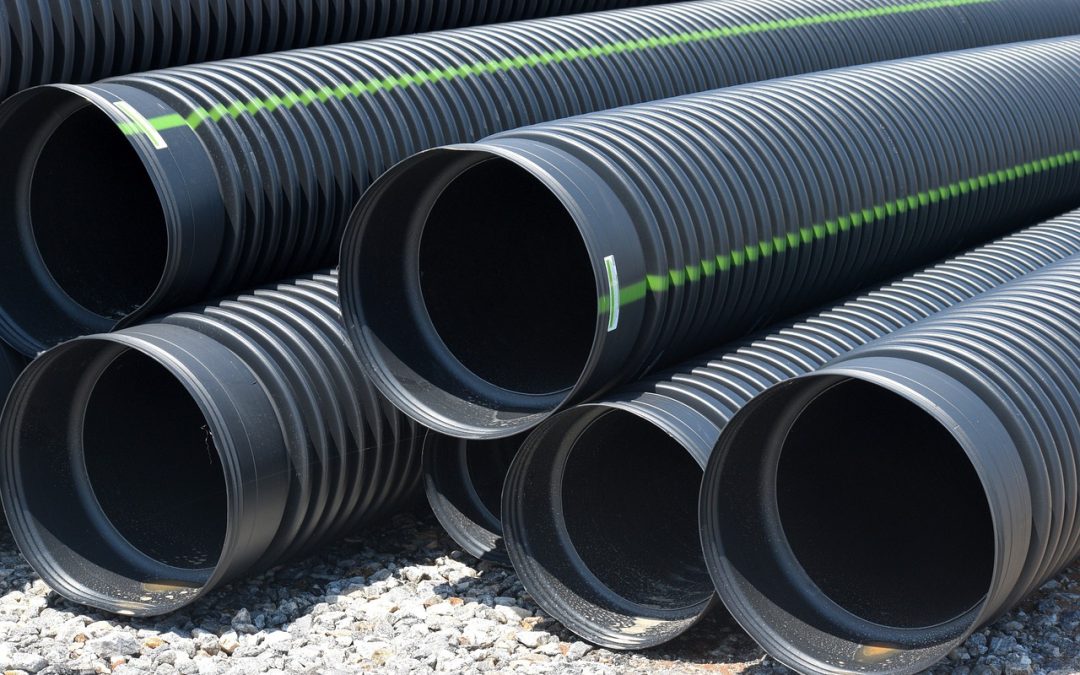The G&W Guide to… Soakaway Offset
Geoenvironmental • Geotechnical • Regulation
The concentrated discharge of water via a soakaway can cause dissolution problems, voids to form and potentially excessive settlement. This is particularly problematic (dangerous) if a soakaway is located too close to a building, under a drive or recreation area.
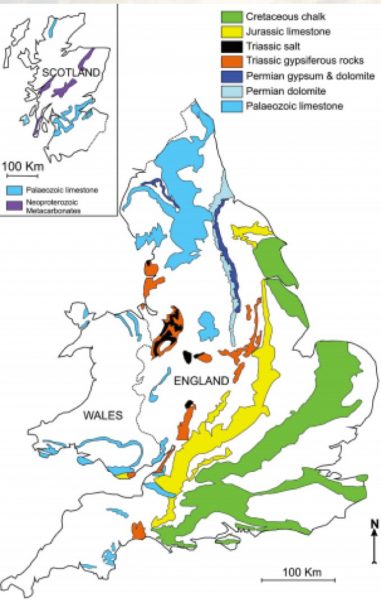
The problems mentioned in our introduction are more likely to occur where there are underlying soluble rocks, such as Chalk, Limestone or Evaporite Deposits (Gypsum). But in reality they can happen anywhere.
The following images are examples of voids we have investigated.
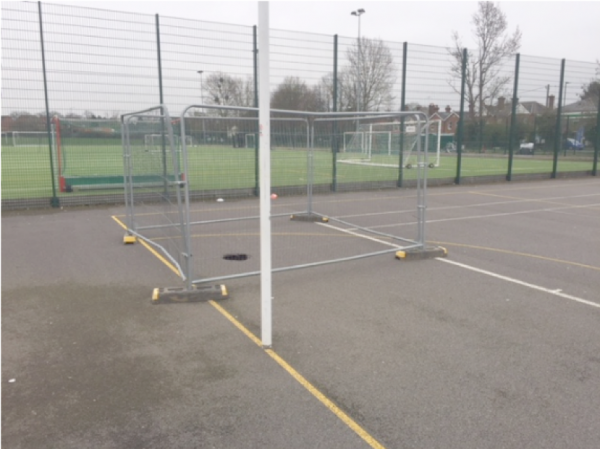
A void in gravelly River Terrace Deposits due to the wash out of finer materials
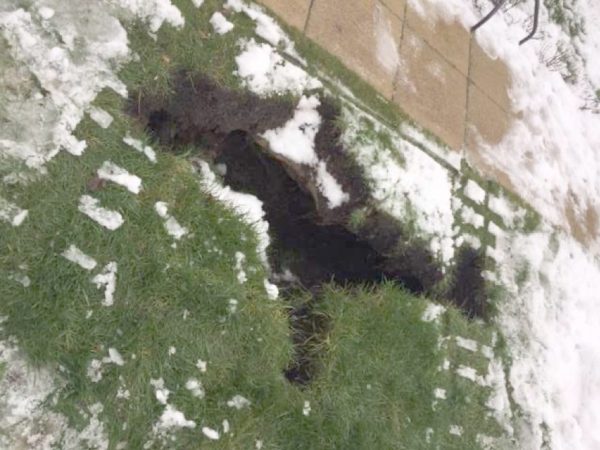
A void in the sandy Folkestone Formation due to the wash out of fines.
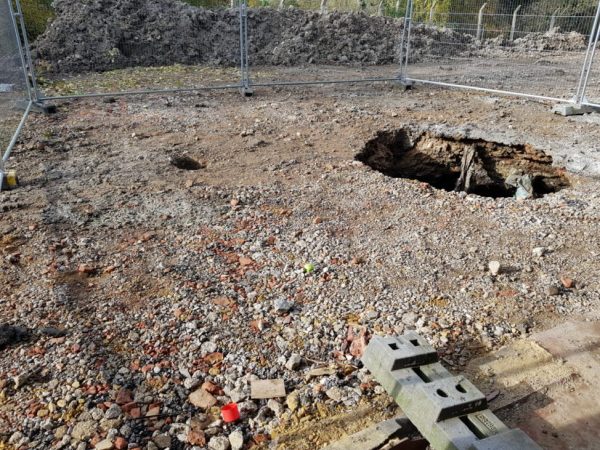
A void in the Made Ground due to the wash out of fines.
How do these voids form?
The diagram (right) explains the process:
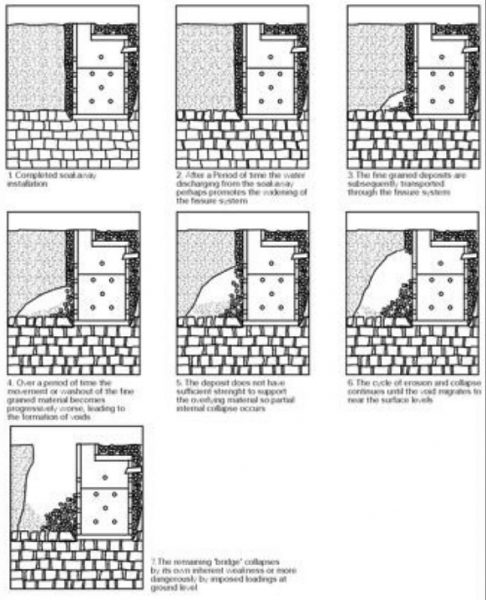 Fig 1 – The completed soakaway installation
Fig 1 – The completed soakaway installation
Fig 2 – After a period of time the water discharging from the soakaway promotes the widening of the fissure system.
Fig 3 – The fine grain deposits are subsequently transported through the fissure system.
Fig 4 – Over a period of time the movement or washout of the fine ground material becomes progressively worse leading to the formation of voids.
Fig 5 – The deposit does not have sufficient strength to support the overlying material so partial internal collapse occurs.
Fig 6 – The cycle of erosion and collapse continues until the void migrates to near the surface.
Fig 7 – The remaining bridge either collapses due its inherent weakness or more dangerously by a loading on it at ground level.
Different soakaway types have different re-activation of dissolution feature/wash out potential.

The potential for voiding (fine washout) could cause settlement/structural issues in relation to neighbouring buildings. Therefore, there is generally an offset from soakaways to buildings. But what standard should I design to?
(a) Building Research Establishment Digest 151 “Soakaways” (1981)
- “In land overlying chalk there may be serious risk of swallow holes and these may be activated by the concentrated discharge from a soakaway. Because of the wide variation in soils and site conditions it is not possible to give any generally applicable guidance as to the ‘safe’ distance from a building but the local authority can usually offer advice on this based on their detailed knowledge and experience of the locality.”
(b) British Standard BS8301 :1985 “Code of practice for building drainage” (1985)
- “A soakaway is not desirable nearer to a building than about 5m nor in such a position that the ground below foundations is likely to be adversely affected.”
(c) Building Research Establishment Digest 365 “Soakaway design” (1991)
- “Soakaways should not normally be constructed closer than 5m to building foundations. In chalk or other soil and fill material subject to modification or instability, the advice of a specialist geotechnologist should be sought as to the advisability and siting of a soakaway”.
(d) Kent County Council “Kent Design” (2000)
- “Highway soakaways shall be situated the following minimum distances from dwellings (measured from the outside edge of the soakaway):
- 5m for conventional perforated soakaway
- 10m for deep bored soakaway”
- Adjacent soakaways of a similar type shall also be spaced a minimum of 10m apart.
So as a general rule of thumb it’s 5m mainly for a traditional soakaway and 10m for a borehole soakaway… But what about chalk?
CIRIA 574
In designing shallow foundations for structures, concentrations of rainwater percolating into the ground should be avoided by careful detailing of the structure. Soakaways should be avoided if at all possible. If unavoidable, they should be sited at least 5-10 m away from any structure, depending on the chalk density.
Concentrated ingress of water into the chalk can initiate new dissolution features, particularly in low-density chalk, and destabilise the loose backfill of existing ones. For this reason, any soakaways should be sited well away from foundations for structures, roads or railways, as indicated below. In areas where dissolution features are known to be prevalent, soakaways should be avoided if at all possible but, if unavoidable, should be sited at least 20 m away from any foundations.
- Where the chalk is of low density, or its density is not known, soakaways should be sited at least 10m away from any foundations.
- Where the chalk is of medium density (or higher), the closest part of the soakaway should be at least 5m away from any foundations.
Conclusion
Unless you get the site investigation right, and correctly determine the density of chalk, your soakaways will end up 10m from foundations – or even further if dissolution risks are prevalent. This may not work for you.
If you want to avoid the issues covered above call Ground & Water. We can conduct a site specific investigation to determine the optimal drainage design solution.
